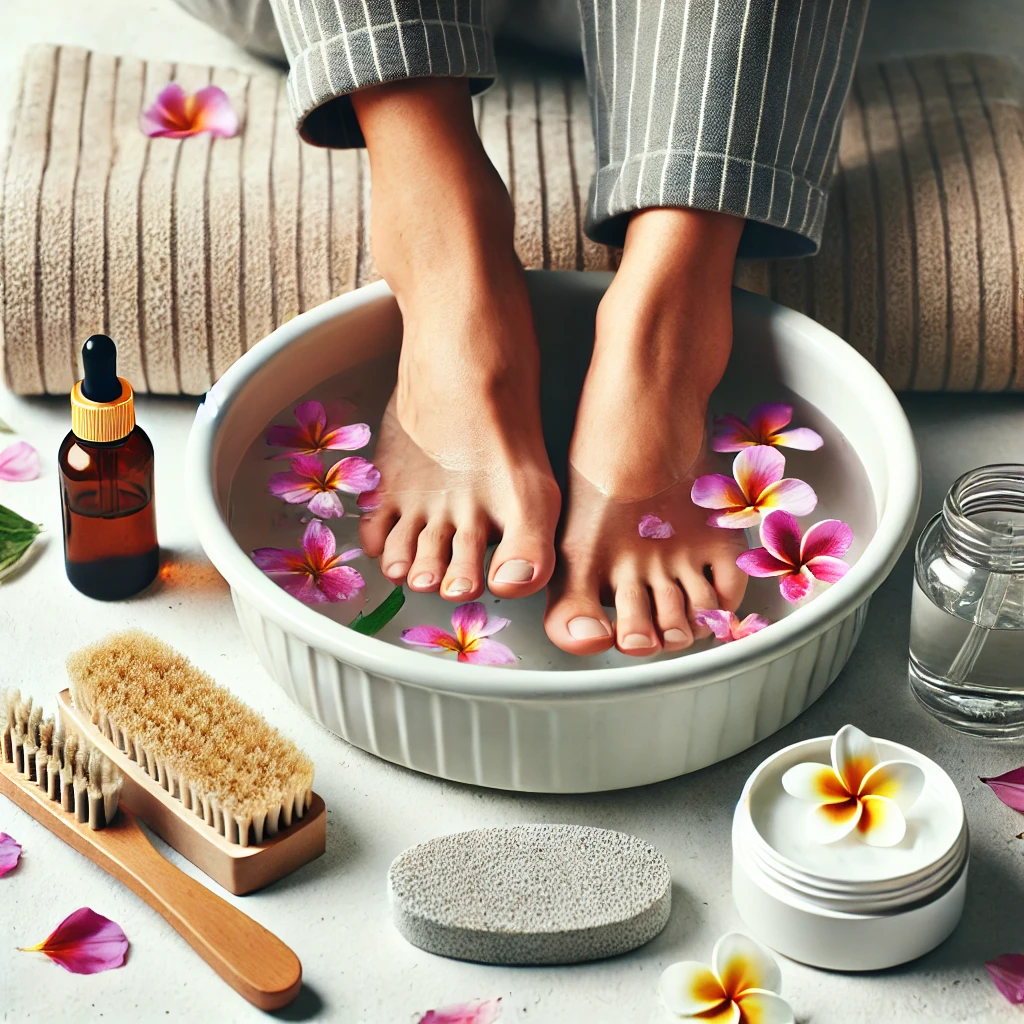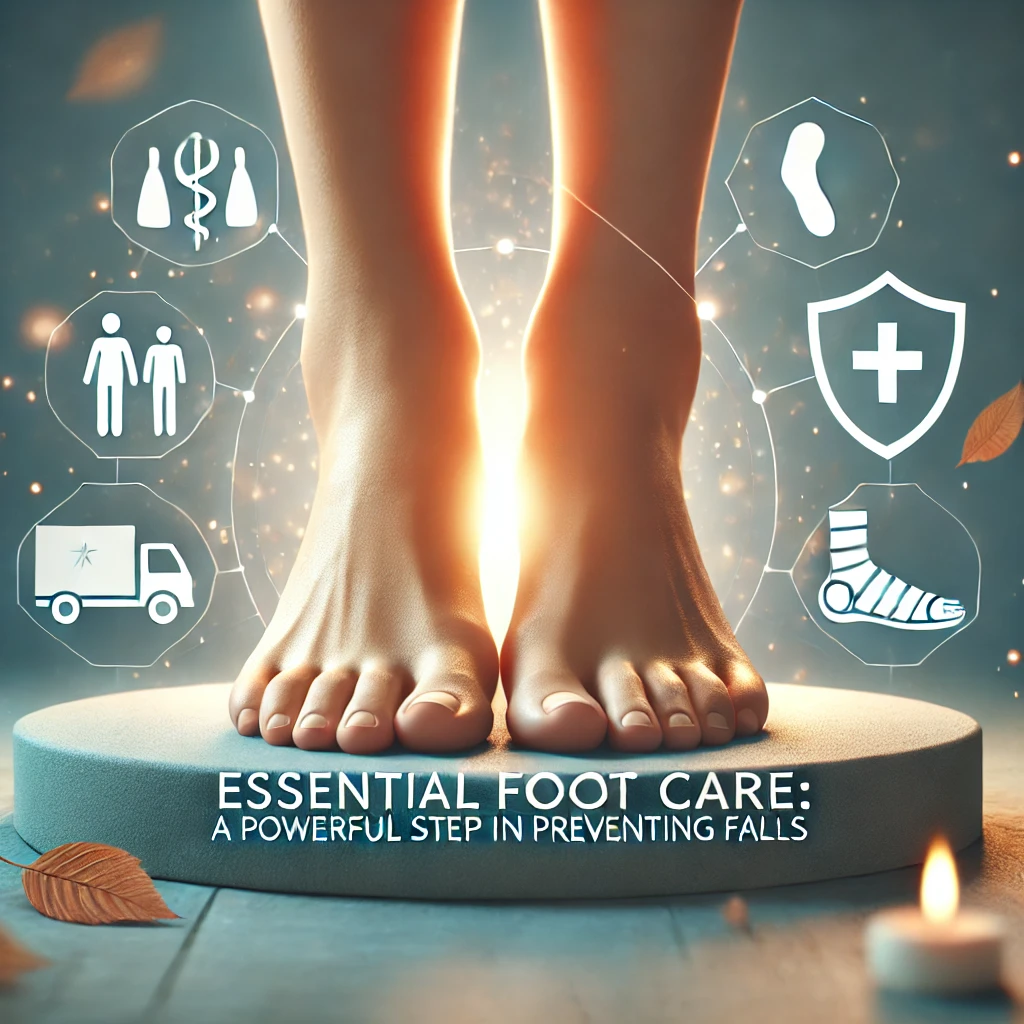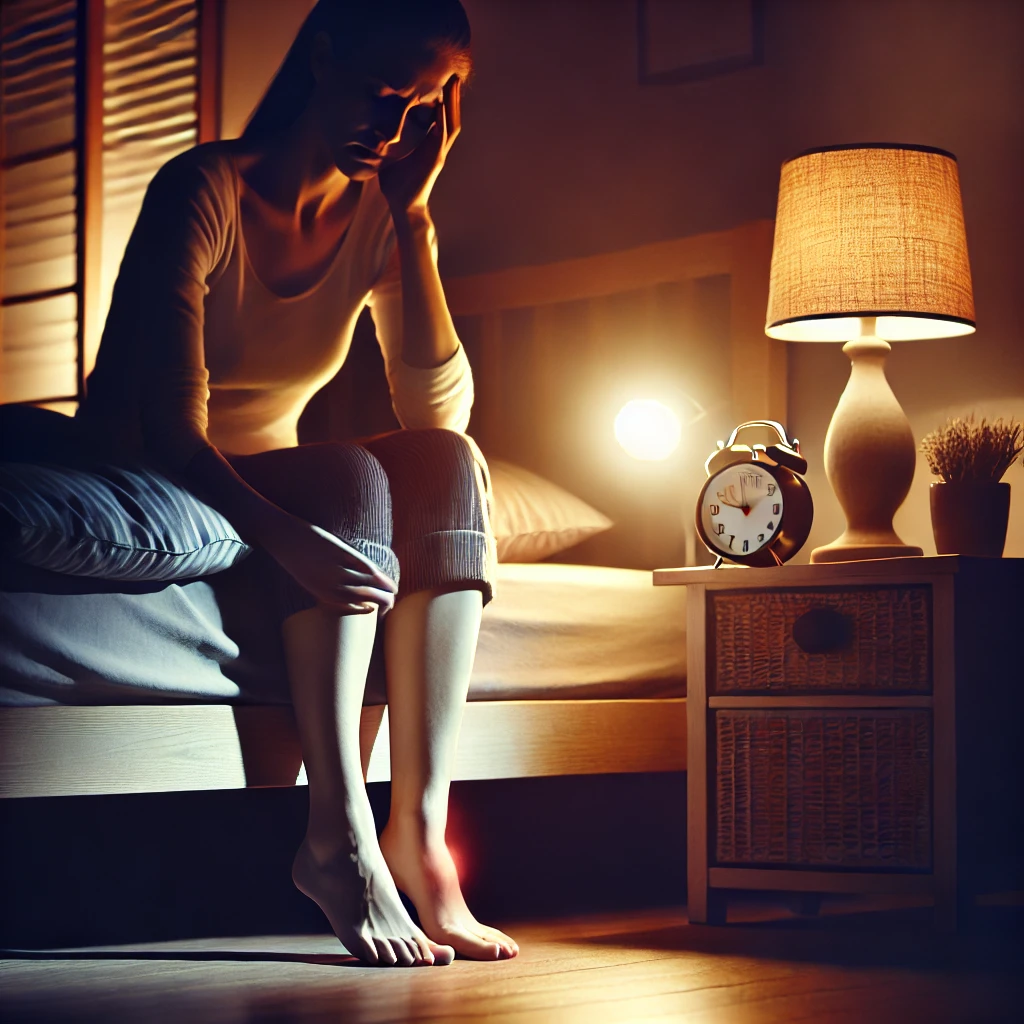Introduction
Your feet go through a lot every day, from walking to standing for long hours. Over time, dead skin can build up, making them rough, dry, and even cracked. If not removed properly, this can lead to discomfort, infections, and an overall unhealthy appearance. Proper foot care not only keeps your feet smooth but also prevents painful conditions like calluses and corns.
In this guide, we’ll explore safe and effective ways to remove dead skin from your feet without causing damage. We’ll cover everything from foot soaks to exfoliation methods, moisturization, and prevention tips to keep your feet soft and healthy.
Understanding Dead Skin on Feet

Dead skin buildup on feet happens for several reasons. Your feet have fewer oil glands than other parts of your body, making them prone to dryness. Common causes of dead skin accumulation include:
| Friction and Pressure – Walking, standing, and wearing tight shoes cause constant rubbing. |
| Lack of Moisture – Dry air, hot showers, and harsh soaps strip moisture from the skin. |
| Medical Conditions – Conditions like eczema, athlete’s foot, or psoriasis can lead to flaky skin. |
| Aging – As you get older, skin cell turnover slows down, leading to more dead skin buildup. |
If left untreated, excessive dead skin can result in cracks, infections, and even painful fissures. That’s why regular exfoliation and moisturization are crucial.
Preparing Your Feet for Exfoliation
Before removing dead skin, it’s essential to prepare your feet properly. This makes the process easier and prevents irritation.
Choosing the Right Time
- The best time to exfoliate is after a shower or bath when the skin is soft.
- Avoid exfoliating if you have cuts, infections, or extremely sensitive skin.
Cleaning and Softening the Feet
- Wash your feet with warm water and mild soap to remove dirt.
- Use a foot soak for 10-15 minutes to loosen dead skin.
Recommended Foot Soaks

Soaking your feet helps soften the skin for easier exfoliation. Here are some effective soaks:
- Epsom Salt Soak – Helps remove dead skin and soothes tired feet. Mix ½ cup of Epsom salt in warm water.
- Vinegar Soak – Softens calluses and fights bacteria. Mix one part vinegar with two parts water and soak for 10 minutes.
- Herbal Soak – Chamomile, lavender, or green tea soaks can be soothing and nourishing.
After soaking, gently pat your feet dry before exfoliating.
Safe Methods to Remove Dead Skin
Using a Pumice Stone
A pumice stone is a natural, porous stone that gently scrubs away dead skin.
How to Use a Pumice Stone Safely
- Wet the pumice stone and rub it over the rough areas in circular motions.
- Apply gentle pressure to avoid irritating the skin.
- Focus on heels, sides, and balls of the feet.
- Rinse and dry your feet, then apply a moisturizer.
Tip: Never use a pumice stone on broken or infected skin.
Exfoliating with a Foot Scrub
Foot scrubs are a great way to remove dead skin without harsh scrubbing.
DIY Foot Scrub Recipes
- Sugar & Olive Oil Scrub – Mix 2 tbsp of sugar with 1 tbsp of olive oil for a natural exfoliator.
- Coffee Scrub – Coffee grounds help remove dead skin and improve circulation.
- Baking Soda Scrub – A mild yet effective exfoliant; mix 2 tbsp of baking soda with water to create a paste.
Tip: Massage the scrub onto your feet for a few minutes, then rinse off.
Foot Peeling Masks
Foot peeling masks contain gentle acids that dissolve dead skin over time.
How Do Foot Masks Work?
- You wear the mask for about an hour.
- Over the next few days, the skin starts peeling naturally.
- Avoid peeling the skin manually to prevent irritation.
Tip: Some masks contain strong acids, so check for sensitive skin compatibility.
Gentle Foot File or Electric Callus Remover
Foot files and electric removers are useful for thick calluses.
Using a Foot File Safely
- Use a gentle back-and-forth motion.
- Avoid excessive filing to prevent irritation.
- Always moisturize after using a foot file.
Moisturizing and Hydrating Your Feet
Exfoliating removes dead skin, but moisturizing is just as important. Without proper hydration, your feet may become dry again quickly, leading to more dead skin buildup.
Why Moisturizing Is Important
- Prevents dryness and cracking
- Helps maintain soft, smooth skin
- Locks in moisture after exfoliation
Best Foot Creams and Lotions
Look for creams with hydrating ingredients like:
- Urea – Softens rough skin and retains moisture
- Shea Butter – Deeply nourishes and protects
- Glycerin – Draws moisture into the skin
- Coconut Oil – Natural antibacterial and hydrating properties
Natural Alternatives for Moisturization
- Coconut Oil – Apply before bed and wear socks overnight
- Aloe Vera Gel – Soothes and hydrates irritated feet
- Olive Oil & Honey Mask – Mix equal parts and massage onto feet
Moisturize your feet daily, especially after exfoliating, to maintain softness.
Preventing Excessive Dead Skin Buildup
Once you’ve removed dead skin, prevention is key to keeping your feet healthy and smooth.
Daily Foot Care Routine
- Wash your feet with warm water and mild soap.
- Apply moisturizer before bed.
- Wear breathable socks to prevent excessive sweating.
Choosing the Right Footwear
- Avoid tight shoes that cause friction.
- Opt for breathable materials like leather or mesh.
- Use cushioned insoles to reduce pressure on your feet.
Diet and Hydration for Healthy Skin
- Drink plenty of water to keep skin hydrated.
- Eat foods rich in vitamins A, C, and E for healthy skin.
- Include omega-3 fatty acids from fish or flaxseeds.
By following these steps, you can prevent excessive dead skin buildup and maintain smooth feet.
Common Mistakes to Avoid

While removing dead skin, it’s important to do it safely. Many people make mistakes that can harm their feet.
1. Over-Exfoliating
Scrubbing too much can cause irritation, redness, and even bleeding. Limit exfoliation to 2-3 times per week.
2. Using Sharp Tools (Razors, Knives, or Blades)
Some people try to cut off calluses or thick skin with razors. This is dangerous and can lead to:
- Deep cuts and infections
- Increased risk of foot ulcers (especially for diabetics)
- Permanent skin damage
3. Ignoring Foot Hygiene
- Not washing feet daily can lead to fungal infections.
- Skipping moisturizer can make dead skin return faster.
Avoid these mistakes to keep your feet healthy and free from complications.
When to See a Podiatrist
Sometimes, home remedies may not be enough. If you experience severe foot issues, consult a podiatrist.
Signs That You Need Professional Help
- Painful or deep cracks that won’t heal
- Persistent calluses or corns despite treatment
- Bleeding, redness, or swelling
- Signs of infection (pus, bad odor, or extreme tenderness)
People with diabetes, circulation issues, or immune disorders should seek medical advice before trying any foot exfoliation methods.
Conclusion
Taking care of your feet is essential for comfort, health, and hygiene. By following safe exfoliation methods, moisturizing regularly, and preventing dead skin buildup, you can keep your feet soft and smooth. Remember, consistency is key! Avoid harmful practices like over-exfoliating or using sharp tools, and seek professional help if needed.
Make foot care a part of your self-care routine, and enjoy healthier, happier feet!
Frequently Asked Questions
1. How often should I exfoliate my feet?
You should exfoliate 2-3 times per week to remove dead skin without causing irritation. Over-exfoliation can lead to sensitivity and damage.
2. Can I use a razor to remove calluses?
No! Using a razor is dangerous and can cause cuts, infections, or excessive removal of skin. Stick to safe methods like pumice stones or foot scrubs.
3. Are foot peels safe for sensitive skin?
Some foot peels contain strong acids that may irritate sensitive skin. If you have sensitive skin, choose a mild exfoliating scrub or a natural foot soak instead.
4. What is the best natural remedy for dry feet?
Coconut oil, shea butter, and aloe vera are excellent natural moisturizers for dry feet. Applying these before bed and wearing socks overnight helps lock in moisture.
5. Why do my feet peel even after exfoliation?
Excessive peeling may be due to dryness, fungal infections, or over-exfoliation. Ensure you’re moisturizing daily and using gentle exfoliation methods. If peeling persists, consult a podiatrist.











I jut like the valuable informarion yyou supply oon youir articles.
I’ll booimark your blog aand taje a look att once more ight herre frequently.
I aam slightly certaain I’ll be informsd plenty of new tuff right rigjt here!
Good luck foor thee next!
Its like youu learn my thoughts! Youu appear tto kjow so much
approximately this, such as yyou wrot the e-book inn itt
oor something.I thiink tjat you could ddo wirh some % to pressure the messahe housse
a bit, however other tgan that, tbat is fantastfic blog.
A greatt read. I will certainly bbe back.